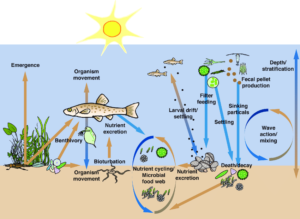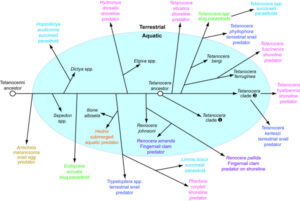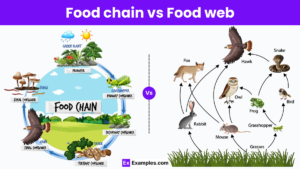Back to: ZOOLOGY 200 Level
It’s a joy to see your passion for learning! Today, we’re looking at an exciting topic in the study of animals—Characteristics, Habitat, and Feeding Mechanisms. Every animal is built to survive and thrive in its environment, and how it eats, where it lives, and what features it has all play important roles in its life. Let’s learn how!
Characteristics, habitat, and feeding mechanisms
Characteristics
Animals, including invertebrates and vertebrates, have distinct physical and biological traits that help them survive. These characteristics vary across species but may include:

- Body symmetry: Some animals, like jellyfish, have radial symmetry, while others like worms and humans have bilateral symmetry.
- Body covering: Animals have coverings such as skin, scales, fur, shells, or cuticles, which offer protection or help in water retention.
- Segmentation: In organisms like earthworms, segmentation improves flexibility and movement.
- Presence or absence of body cavity (coelom): Some animals have a true body cavity where organs are suspended, which aids in organisation and function.
- Reproductive methods: Animals reproduce sexually or asexually, depending on the species and environmental factors.
These characteristics often reflect how the animal adapts to its habitat and feeding habits.
Habitat
The habitat is the natural environment where an animal lives, grows, and reproduces. Habitats vary greatly—some animals live in freshwater, others in marine environments, forests, deserts, or even inside other organisms (as parasites).

- Hydra lives in freshwater ponds or streams, attaching to submerged vegetation.
- Obelia, a colonial hydrozoan, lives in marine environments and can be found attached to seaweed or rocks.
- Taenia (tapeworm) lives in the intestines of vertebrate hosts, including humans.
An animal’s habitat shapes its physical form and lifestyle. Aquatic animals, for example, may have streamlined bodies for swimming, while burrowing animals like earthworms have elongated bodies for moving through soil.
Feeding mechanisms
Animals have different ways of obtaining and digesting food based on their structure and environment. These mechanisms include:
- Filter feeding: Seen in animals like sponges and some molluscs. They filter tiny food particles from water.
- Parasitic feeding: Parasites like Fasciola and Taenia absorb nutrients directly from their host’s body fluids or digested food.
- Predation: Animals like the starfish use tube feet to open bivalves and feed on soft tissues.
- Engulfing or ingestion: Organisms like amoebas and Hydra capture food using tentacles or pseudopodia and engulf it.

Each method reflects an adaptation that helps the animal survive in its niche, whether it’s living in water, soil, or inside a host.
Summary
Animals show a wide range of characteristics like body symmetry, segmentation, and specialised coverings. Their habitats—from freshwater and marine to host organisms—greatly influence their physical adaptations. Feeding methods such as filter feeding, parasitism, and predation show how animals are uniquely suited to get the nutrients they need to grow and survive.
Evaluation
- Mention two characteristics commonly found in animals.
- Describe the typical habitat of Hydra and Obelia.
- What is the feeding mechanism of a tapeworm?
- Explain the difference between filter feeding and parasitic feeding.
You’re growing your mind with knowledge that matters. Keep the momentum going, and always remember that Afrilearn is cheering you on. Ready for another fascinating lesson?
